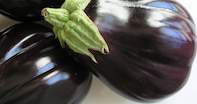
Plant Description
Brinjal is a plant with large dull green slightly fury leaves. Grows about one meter tall. The flowers before fruit set are light purple. The fruit is dark purple to black and some varieties are white hence the name Egg fruit because it is oval shaped like an egg.Uses
Eggplant or Brinjal is eaten grilled, stuffed, roasted, served in soups and stews and on kebabs, and used in curries and stir-fries.Soil Requirements and Preparation
Brinjal prefers a sandy loam soil with good drainage properties. The plant thrives in soils with a pH of between 5.5 and 6.5. The soil must be prepared with enough organic matter in the top 40 cm as this is where the most roots are developed.
Prior to composting the field must be ripped and loosened to a depth of about 100 cm as some Brinjal roots can descend to over one meter. The plant area must be tilled to ensure the top soil is clean and level. Some growers plant on raised beds to better drainage in heavier soils.
Climate
Brinjal is a warm climate plant and originates and does best in subtropical and tropical regions. It is also grown in warm Mediterranean regions. It is sensitive to frost and growth and development is retarded in temperatures below 16°C.
It also does not do well when temperature go over 35°C. The best results are achieved when Brinjal is planted in regions where day and night temperatures fluctuate between 18°C and 28°C.